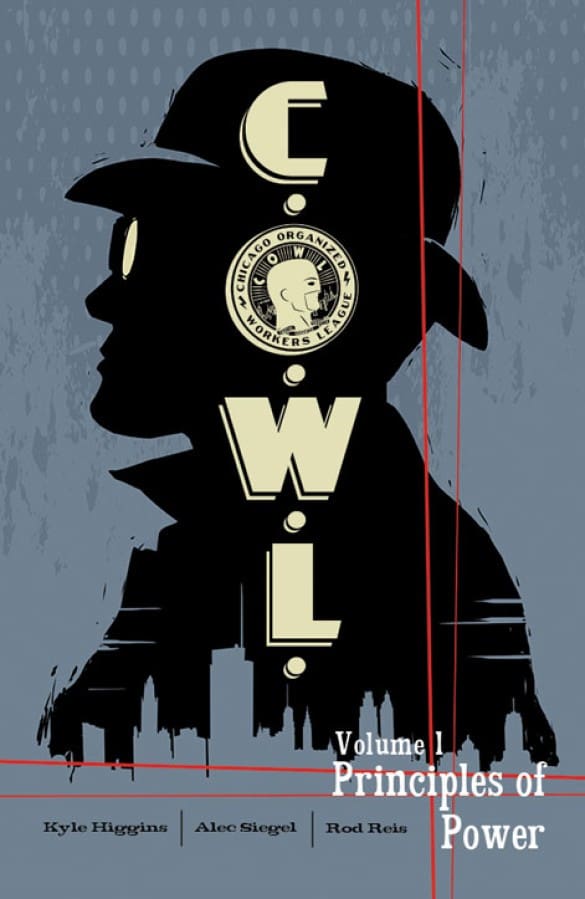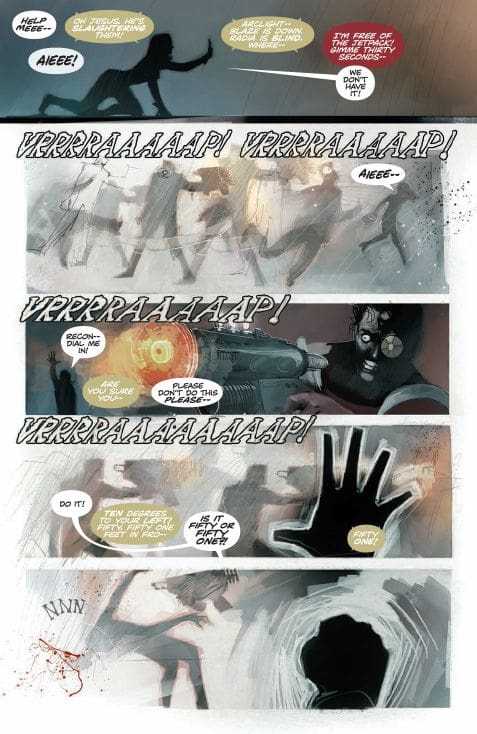 In preparation for the upcoming release of the next story ten years in the making within the Massive-Verse, C.O.W.L. 1964, we take a look back at where it all began for the Chicago Organized Workers League in volume one, titled “Principles of Power.” Written by Massive-Verse kingpin Kyle Higgins, (Radiant Black, Mighty Morphin Power Rangers, Hadrian’s Wall), and Alec Siegel (Hadrian’s Wall, Captain American, Batman 2.0), with art by Rod Reis (Hadrian’s Wall, Superman, Justice League). Andy Schmidt on letters, with Trevor McCarthy on covers, Rich Bloom as designer, and additional art by Stephane Perger.
In preparation for the upcoming release of the next story ten years in the making within the Massive-Verse, C.O.W.L. 1964, we take a look back at where it all began for the Chicago Organized Workers League in volume one, titled “Principles of Power.” Written by Massive-Verse kingpin Kyle Higgins, (Radiant Black, Mighty Morphin Power Rangers, Hadrian’s Wall), and Alec Siegel (Hadrian’s Wall, Captain American, Batman 2.0), with art by Rod Reis (Hadrian’s Wall, Superman, Justice League). Andy Schmidt on letters, with Trevor McCarthy on covers, Rich Bloom as designer, and additional art by Stephane Perger.
For those unfamiliar, this story takes place post-war era Chicago. Superhumans were implented during the war, but afterwards there seemed to be no place and no where for heroes to go. However, old veterans such as The Grey Raven along with Sparrow and Blaze found a place in Chicago as crime rates spiked thanks to the involvement of superhumans among mafias. As time passed, more superhumans were employed to assist police in stopping superpowered crime.
As time goes on, Geoffery Warner, formerly the Grey Raven, heads C.O.W.L., a union formed for superheores much in the way there are unions for police, teachers, and other city employees. His fight is one thought impossible, to stem the tide of public opinion.
 In the first issue of the graphic novel, the last of the “Chicago Six” is taken down, which leads media to wonder if C.O.W.L. is still needed? Do we need superheroes if there are no powered villians? The series becomes a blen of detective mystery, political manipulation, and how the core heroes react and change in order to preserve their own livelihoods.
In the first issue of the graphic novel, the last of the “Chicago Six” is taken down, which leads media to wonder if C.O.W.L. is still needed? Do we need superheroes if there are no powered villians? The series becomes a blen of detective mystery, political manipulation, and how the core heroes react and change in order to preserve their own livelihoods.
Follow Detective John Pierce as he uncovers a bigger conspiracy which will have direct implications on the future of the Chicago Organized Workers League. Stand by to observe how Warner has to negotiate a losing union deal with the city.
Other heroes are caught in the middle of a larger web of dark intrigue. Chicago in 1962 may seem bleak through the eyes of an outsider, but for the heroes, its much worse.
The interior art depicts the worsening conditions with downpouring rain, the sunken faces, and a gloomy picture of what is yet to come.
The story and art pulled me in. Art by Rod Reis has a very unique feel. It’s different, it does not just look gritty, it feels like it. It seems as though the art amplifies the feelings of despair and the emotional darkness hovering around 1960’s Chicago.
The depth of the story and how events unfold at a methodical pace, I couldn’t help but feel as though I was watching horrible events unfold and was powerless to warn the characters off. There were points I knew what was coming, and I believed this to be intentional by the writers, adding to the suspense and tension as the story continued on.
Writer Kyle Higgins has stated C.O.W.L. in fact, does reside within the Massive-Verse. Wonder if 1964 will perhaps lean into it at all? There was an animated short in 2022 where Blaze encountered Radiant Black.
If you plan on picking up C.O.W.L. 1964, then I strongly recommend picking up this trade as soon as possible. Go to your local comic shop right away!

